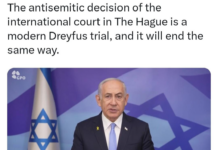The despotic regimes which millions of Muslims rose up against during the Arab Spring have been restored due to a failure in leadership and vision from Islamic movements, writes Jahangir Mohammed.
In 2011, the popular uprisings known as the “Arab Spring” caught both Western governments and Islamic movements by surprise. These uprisings had the potential to become world-changing revolutions that could have eventually led to the creation of a powerful and united bloc of independent Islamic States.
Many Islamic groups and movements of the region were simply not expecting uprisings of the scale seen in Egypt, Syria, Tunisia, Libya, Bahrain and Libya to become a reality. And while the uprisings spread like wildfire, these Islamic groups had failed to articulate a vision necessary to take the revolutions to the next stage.
The Muslim Brotherhood and its regional affiliates and branches, had historically seen their struggle as one centred on the creation of “Islamic states” – initially via grassroots dawah, then armed insurrection for a period of time, and currently via democratic elections under the existing system. Hence, when the West began preaching “democracy” in the region, the leadership of the Muslim Brotherhood parties assumed they would receive their support.
The Arab Spring had successfully removed long-lasting dictators in Egypt, Tunisia and Libya, but instead of following it up with the uprooting of the regime and its “deep state”, the Ummah was led to the ballot box, and ultimately, straight back to the “old order” that had been oppressing them for decades. This was a spectacular miscalculation on the part of these movements and parties, and it was a failure of political vision, leadership, and direction.
Western governments have never cared much for democracy or human rights in other parts of the world. What matters to the West is whether a regime can serve their geopolitical interests or not. Islamic movements like the Muslim Brotherhood should have known this from colonial and post-colonial history – Hasan al Banna and Sayyid Qutb did.
Learning from the past
Subscribe to our newsletter and stay updated on the latest news and updates from around the Muslim world!
After the success of the “Islamic” revolution in Iran in 1979; Western governments were determined to prevent any Muslim majority country from overthrowing their agents in these client states. They actively sabotaged Islamic movements from becoming dominant players in the region via the brutality of their puppets and infiltration by security services, especially those working towards the formation of any independent Islamic government.
The West led by the U.S. tried to derail the independence of the Iranian people through war and sanctions. The French prevented the Islamic Salvation Front (FIS) achieving a landslide victory in the Algerian elections in 1992. Subsequently, the Algerian Junta facilitated the birth of the infamous GIA (Armed Islamic Group) who went onto slaughter civilians en masse, which deterred Algerians from supporting an Islamic political goal again. Many have compared the GIA to ISIS.
Lest we forget, the West still refuses to recognise Hamas as the democratically elected authority in the Gaza Strip and the group remains as a designated terrorist organisation on many Western blacklists.
The U.S. and the U.N. disrupted Sudan’s attempts at creating an “Islamic State” under Hassan Al Turabi and Omer al Bashir. Bashir was put on a wanted list for crimes against humanity which eventually led to the partitioning of Sudan.
In Afghanistan, the Taliban were forcibly removed from power by the Western-backed Northern Alliance under the pretext of harbouring Al Qaeda and Osama bin Laden.
The West backed Ethiopian forces to remove the Union of Islamic Courts consolidating power in Somalia, while the French prevented Ansar al-Deen forming an alliance with other Islamic groups to take over north Mali.
In Chechnya, the Russians prevented an indigenous Islamic movement from coming to power, and they have done the same in other regions under its sphere of control. In reality, while Russia and the U.S and its allies appear to be in competition, they are in fact absolute harmony dealing with Islamic movements, using exactly the same “War on Terror” narrative.
For Western politicians, spreading democracy in Iraq and the Middle East was a mere slogan for a modern-day Reconquista, sub-division, control of Muslim regions (and their wealth), and the global imposition of secular liberalism. During the” Arab Spring”, they paid lip service in public to Arab people’s aspirations for self-determination and independence. Behind the scenes they were working to subvert them, especially through their client states in Saudi Arabia, Egypt, and the UAE.
Egypt: A Muslim is not bitten from the same hole twice
In the 1960’s, Sayyid Qutb and the Muslim Brotherhood thought that working with Nasser and the military would eventually allow them to create an “Islamic state”. They put their faith in Nasser’s Arab socialism and the military.

The consequence was that Nasser ended up with power and the Brotherhood and Qutb in prison, eventually being executed in large numbers. Decades of executions, repression, and hot-cold relationships with Saudi and Gulf rulers led to the Brotherhood limiting their ambitions to participating and hopefully winning an election, and taking over the same oppressive system.
By the time the Arab Spring began, the demands of the masses to overthrow the system (not everyone wanted an Islamic government by the way) was beyond the aspirations of the Muslim Brotherhood – the largest Islamic movement in the region. This time the Brotherhood put their faith in democracy and the military.
They again did a deal for power with the military, believing that the West and Gulf rulers would back them. After winning an election, and a short spell in office, President Morsi was deposed via military coup led by General Abdel Fattah al -Sisi.
Tunisia: An “Islamic Democracy” or a return to the secular militarism?
In Tunisia, Rachid Gannouchi of Ennahda got his opportunity to establish his conception of an “Islamic democracy“.
After Ben Ali was deposed, Ennahda engaged with the military and the old order in exchange for electoral success and party power. In doing so, they put the people back into the hands of the old order.

The secular military elite found even Ennahda’s limited expression of Islam too much. Gannouchi was pressured to resign, and in 2014 an alliance of the old order and secularists won the elections. To achieve future electoral victory, Ennahda has taken Islam out of its party agenda and replaced it with a commitment to secularism.
Tunisia’s government today represses non-Brotherhood Islamic movements and aspirations as it did in the past.
Yemen and Bahrain: Saudi military interventionism
In both Yemen and Bahrain, the people demonstrated and demanded reform and change.
Subsequently, the Saudi military sent in its troops to stop the collapse of Al Khalifa’s regime.
In Yemen, the eventual removal of President Ali Abdullah Saleh led to a Western backed GCC transition to his deputy Abdrabbuh Mansur Hadi. Continued opposition from both Sunni’s and the Houthi’s led to the Houthi’s taking power by force in 2015.
The old order was in tatters. The Saudi’s backed by the West sent in the military to restore the old order.
Syria and Iran: From “Islamic Awakening” to “War on Terror”
The mass popular protests in Syria led to a violent crackdown by the Assad regime. The Syrian people chose to defend themselves from horrific brutality.
Assad and his Iranian backers knew any free elections would lead to a majority Sunni and Brotherhood win.

Iran, which had until then called the Arab Spring an “Islamic Awakening”, sent in its forces to keep the old order intact.
Iran’s official narrative on Iraq and Syria became indistinguishable from the West’s “War on Terror” propaganda.
Whilst championing anti-imperialism, Iran’s militias have fought side by side with Western and Russian forces (with aerial cover), to crush Sunni movements in Afghanistan, Iraq and Syria.
The West was happy for Shia militias and Iranian forces to act as their ground troops to crush Sunni aspirations for Islamic self-determination. Whilst paying lip service to removing Assad and even supplying some leftist inclined groups with light arms, behind the scenes they worked to preserve Assad in power.
Libya: Out with the Old Order in with the Old.
Libya was different. It had oil like Iraq. It could not be subject to a prolonged struggle between Gaddafi and the people.
Western powers saw an opportunity to grab Libya’s oil wealth directly. So, they chose to destroy the old order themselves.
Once Gaddafi was gone, pressure was maintained to keep remnants of the old guard (like Saif Gaddafi) intact. General Khalifa Hafter – a Western proxy – was brought back (complete with military aid) to restore the old guard to power under Western control.
Despite strong resistance from people’s revolutionary forces (not ISIS), Haftar is on the brink of power. The UN and the West have maintained control of Libya’s global assets and oil wealth during this time.
For millions of Muslims, the “Arab Spring” was an expression of the Ummah’s desire to improve its own economic, political and social situation via Islamic self-determination.
The successes and failures are mere stages in an ongoing struggle against Western imperialism falsely referred to as a “War on Terror”. That struggle is not at an end but will continue.




















